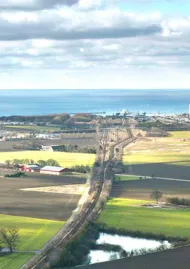Fehmarnbelt Fixed Link

On July 10, 2009 the Bundesrat became the last body of the German Parliament to ratify passage of a treaty between Germany and Denmark, allowing the construction of the Fehmarn Fixed Link (FFL). Initially conceptualized as a bridge, the favored design for the FFL in 2010 was a tunnel that would connect the Danish island of Lolland to the German island of Fehmarn, speeding transportation between Copenhagen and Hamburg. When completed in 2020, the tunnel will be one of the longest and deepest road and rail tunnels ever constructed.
Taking on this daunting construction project was Fehmarn A/S, a fully owned subsidiary of the Danish State. Fehmarn A/S’s management team certainly had experience in managing complex construction projects; a number of them had occupied high-ranking roles at Øresundskonsortiet (ØSK), the organization that built the Øresund bridge-tunnel. The Øresund Bridge-Tunnel, a 16km road and rail way, represented a major engineering feat, connecting Norway and Denmark across the Øresund Strait. When finished, the Øresund link required building a long tunnel, constructing an artificial island and erecting the longest automobile-railroad bridge in Europe. Despite difficult weather and terrain, the ØSK management team had brought this complex project in ahead of schedule and on budget.
Facing an equally daunting project, the Fehmarn team now considered how their experience managing contractors on the Øresund could inform their current project. With total construction costs expected to reach €5.5 billion over the course of the seven years anticipated to build the link, much was at stake in structuring the various construction contracts. The Øresund project was considered a success, but the circumstances of the new project were different and therefore the team had to reevaluate how the contracts were structured.